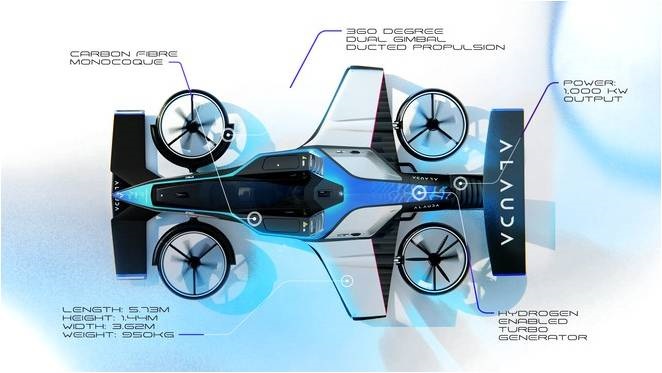Alauda and AMSL – two companies down under – are pressing ahead on divergent missions, but both powering “flying cars” with hydrogen. Both craft will achieve higher speeds and cover longer ranges than most other electric Vertical Take Off and Landing (eVTOL) craft. Alauda Airspeeder MK4 Alauda’s brief history of creating Airspeeders hits its latest iteration, the MK4. It replaces batteries with a 1,000 kilowatt hydrogen-fueled turbo generator driving ducted fans in place of previous open rotors. Up to now, the various Marks were remotely controlled and battery powered. MK4s will be “crewed” and powered by green hydrogen. Evolved over the last few years, MK4 will be much faster than its 100 kilometer per hour predecessors, and we hope, more controllable. Remotely controlled crashes, as shown in this2022 MK3 race, are no more harmful to human operators than a video game – although probably more costly. Looking a great deal like a Formula 1 or Formula e race car, the …
Gérard Thevenot Wins E-Flight Award at AERO 2010
With over 30 electrical flight exhibitors at Friedrichshafen, Germany’s Aero 2010 International Exposition for General Aviation, selection of this year’s E-Flight Award winner must have been particularly difficult. The”E”of the E-Flight portion of the huge show represents, “Electrical, Ecological and Evolutionary.” Thevenot’s machine is all those. Gérard Thevenot flew his hydrogen-powered ultralight “trike” across the English Channel in July, 2009 (“Man of La Manche”, October 29, 2009), with a Geiger/Eck HP-10 electric motor powered by a hydrogen fuel cell, “without the onboard presence of an accumulator or battery.” Showing his 55 kilogram (121 pounds), seven kilowatt (11 horsepower), 12 meter (37 feet) span ultralight at last year’s Expo, he went on to demonstrate its capabilities in the following months. Its light weight allows a consumption of only 550 grams per flight hour, and the craft’s 5-liter tank allows about one hour flying time. In an environmentally friendly hint of its passing, the craft leaves behind only a mist of water …

